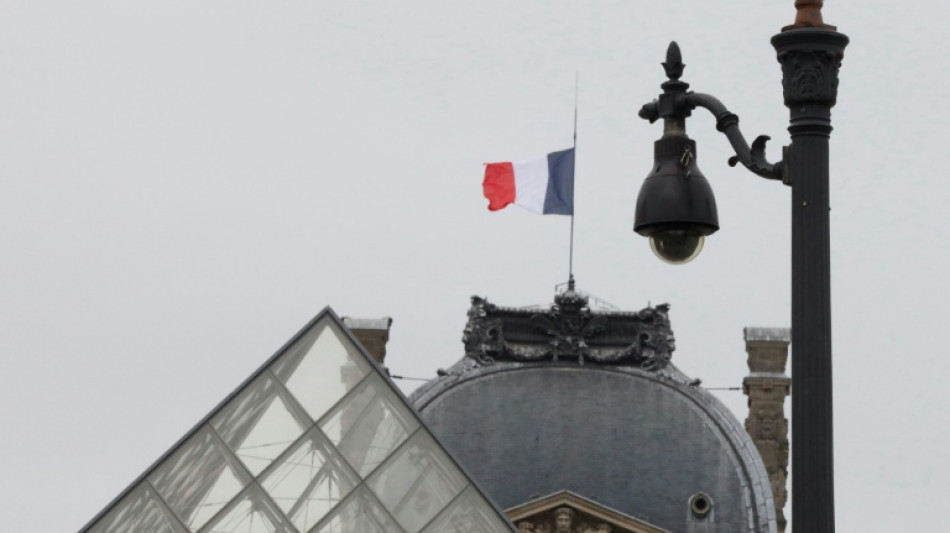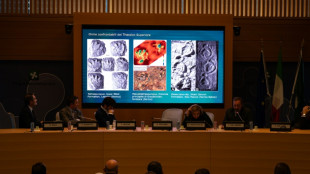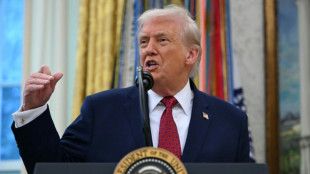
Louvre director admits 'insufficient' camera coverage after heist

The director of the Louvre museum Wednesday admitted there was inadequate security camera coverage of the outside walls of Louvre, three days after a brazen daytime heist stunned the French capital.
Senators grilled Laurence des Cars over how thieves were able to on Sunday make off with an estimated 88 million euros ($102 million) in jewels from the world-famous museum in just seven minutes.
The heist has renewed scrutiny of security at French museums.
"Despite our efforts, despite our hard work on a daily basis, we failed," des Cars told lawmakers in her first public statement since Sunday.
Des Cars said all alarms had functioned during the burglary, but admitted that security cameras did not adequately cover the thieves' point of entry.
"The only camera installed is directed westward and therefore did not cover the balcony involved in the break-in," she said.
"There are some perimeter cameras, but they are ageing," she conceded. Surveillance of the museum's outside walls "is highly insufficient".
But she defended the museum's 80-million-euro security plan, disputing a recent report that cited "persistent delays" in putting it into effect.
Earlier on Wednesday, French President Emmanuel Macron ordered "speeding up" security measures at the Louvre, after the Paris museum reopened its doors to tourists.
Des Cars said she had tendered her resignation on Sunday after the theft, but that the culture ministry had refused it.
Museum-goers flocked to the institution for the 9:00 am (0700 GMT) opening, though the Apollo Gallery -- scene of Sunday's theft -- remained closed.
-'Find the perpetrators'-
The thieves made off with eight pieces, including an emerald-and-diamond necklace that Napoleon I gave his wife, Empress Marie-Louise, and a diadem that once belonged to the Empress Eugenie, which is dotted with nearly 2,000 diamonds.
The investigation "is progressing", Interior Minister Laurent Nunez told local media on Wednesday, saying "more than 100 investigators" had been mobilised.
"I have full confidence, that's for sure, that we will find the perpetrators," he said.
Calling the financial loss "extraordinary", Paris prosecutor Laure Beccuau said the greater damage was to France's historical heritage.
The world's most visited museum, whose extensive collection includes the Mona Lisa, last year welcomed nine million people to its extensive hallways and galleries.
- Gold coins stolen -
The Louvre theft is the latest in a string of robberies targeting French museums, raising questions about security at the country's cultural institutions.
Union representative Christian Galani, who works at the Louvre, said the museum does not have enough security guards after job cuts over the past 15 years, even as visitor numbers have jumped.
"You can walk through several areas without seeing a single guard," he said.
A French art specialist told AFP on the condition of anonymity that in 2024 they were able to get close enough to a work by Italian Renaissance painter Raphael to touch it "without any alarm going off or a curator calling out to me".
Less than 24 hours after the high-profile break-in, a museum in eastern France dedicated to Enlightenment philosopher Denis Diderot reported the theft of gold and silver coins after finding a smashed display case.
Just last month, criminals broke into Paris's Natural History Museum, making off with gold nuggets worth more than $1.5 million.
Also last month, thieves stole two dishes and a vase from a museum in the central city of Limoges, with the losses estimated at $7.6 million.
But thefts from the Louvre have been rarer.
In 1911, an Italian stole the Mona Lisa, but the painting was recovered and today sits behind security glass.
burs-ekf/ah/sbk
X.Dabrowski--GL

 London
London

 Manchester
Manchester
 Glasgow
Glasgow
 Dublin
Dublin
 Belfast
Belfast
 Washington
Washington
 Denver
Denver
 Atlanta
Atlanta
 Dallas
Dallas
 Houston Texas
Houston Texas
 New Orleans
New Orleans
 El Paso
El Paso
 Phoenix
Phoenix
 Los Angeles
Los Angeles



